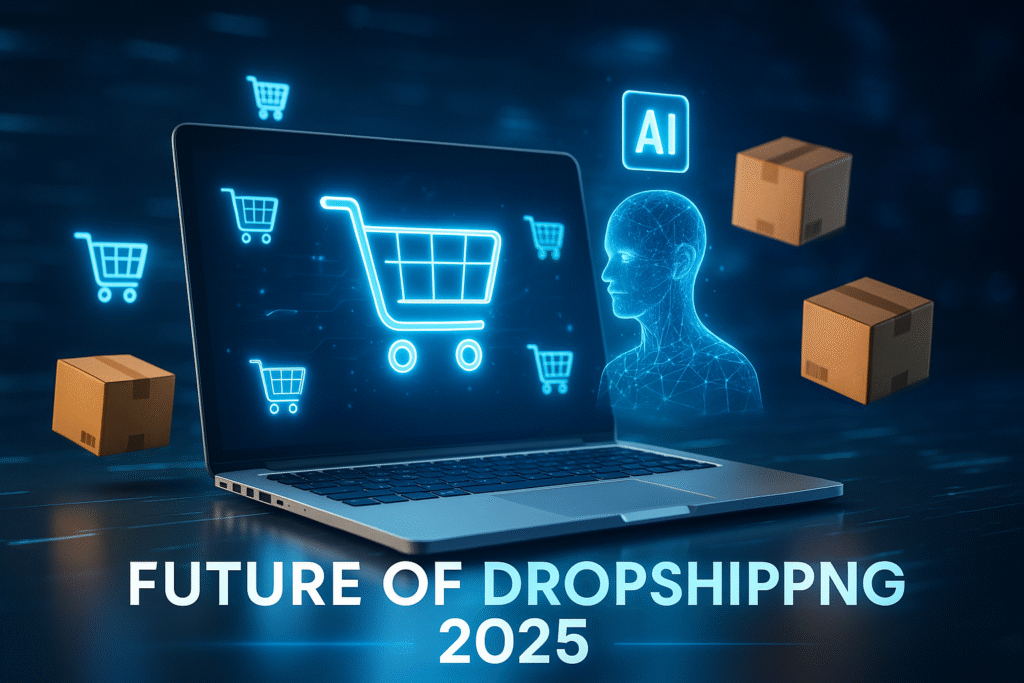Dropshipping has come a long way since it first became a buzzword in the online business world. Once seen as a quick way to start an e-commerce store without managing inventory, it has now evolved into a more sophisticated and competitive industry.
As we move into 2025, the dropshipping landscape is shifting — technology, consumer behavior, and supply chain innovation are reshaping the way entrepreneurs do business. Let’s explore how dropshipping is changing and what the future holds.
1. Automation Will Lead the Way
The future of dropshipping is automated. Tools powered by AI and machine learning now handle:
- Product research
- Order fulfillment
- Customer service
- Inventory tracking
Platforms like Shopify, Zendrop, and AutoDS already automate large parts of the process, helping store owners save time and reduce errors.
💡 Example: AI-driven apps can now predict trending products before they go viral, giving sellers a massive advantage.
2. Faster Shipping Will Become the New Standard
Customers expect Amazon-level delivery speeds. In 2025, successful dropshippers will partner with local and regional warehouses to offer:
- 2–5 day shipping
- Real-time tracking
- Easy returns
Dropshipping suppliers are also expanding fulfillment centers worldwide, making global sales faster and more reliable.
3. Sustainability Will Shape Consumer Choices
Eco-conscious customers are pushing dropshippers to adapt. The future belongs to brands that:
- Use eco-friendly packaging
- Partner with sustainable suppliers
- Promote ethical sourcing
People want to feel good about what they buy — sustainability is no longer optional; it’s essential.
4. Niche Stores Will Outperform General Stores
In the past, general stores selling random trending products worked. But now, niche-focused dropshipping stores are winning.
Why?
- They build stronger brand identities.
- They attract loyal, repeat customers.
- They can charge higher prices for specialized products.
💡 Example: Instead of a general store, a brand that only sells “eco-friendly home decor” can build trust and authority faster.
5. AI-Powered Product Research and Marketing
AI is changing how dropshippers find products and market them. In 2025, entrepreneurs are using AI tools to:
- Identify winning products using trend data
- Write product descriptions automatically
- Create ad copy, videos, and social media content
- Optimize pricing strategies
AI-driven marketing helps small businesses compete with big brands efficiently.
6. Branding Will Become the Key to Success
The days of faceless dropshipping stores are over. In 2025, branding is everything.
Successful stores will focus on:
- Custom packaging
- Branded websites and social media pages
- Consistent visual identity
- Storytelling that connects with audiences
Customers want to buy from brands, not from anonymous sellers.
7. Multi-Channel Selling Will Be the Norm
Instead of relying solely on Shopify or WooCommerce, dropshippers will expand to:
- Amazon and eBay
- TikTok Shop
- Instagram Shopping
- Walmart Marketplace
This multi-channel approach helps brands reach customers wherever they shop — boosting sales and visibility.
8. Subscription-Based Dropshipping Models
A growing trend is subscription boxes for niche audiences — monthly deliveries of curated products like beauty items, snacks, or pet supplies.
This model creates recurring revenue and stronger customer relationships.
9. Influencer and UGC Marketing Will Dominate
Paid ads are getting more expensive. That’s why influencer marketing and user-generated content (UGC) are becoming powerful alternatives.
Partnering with micro-influencers or encouraging customers to post reviews and unboxing videos helps build trust and authenticity — two things that drive conversions.
10. Data-Driven Decision Making
The future of dropshipping is all about data — knowing what customers want before they do.
Analytics tools now provide real-time insights on:
- Conversion rates
- Abandoned carts
- Customer behavior
Smart store owners use this data to refine their offers, improve marketing, and grow faster than competitors.
Conclusion
The dropshipping industry isn’t dying — it’s evolving.
In 2025, successful dropshippers will focus on:
- Automation and AI
- Branding and sustainability
- Faster fulfillment and customer experience
If you can adapt and innovate, dropshipping remains one of the best low-risk online business models — and the opportunity is bigger than ever.


